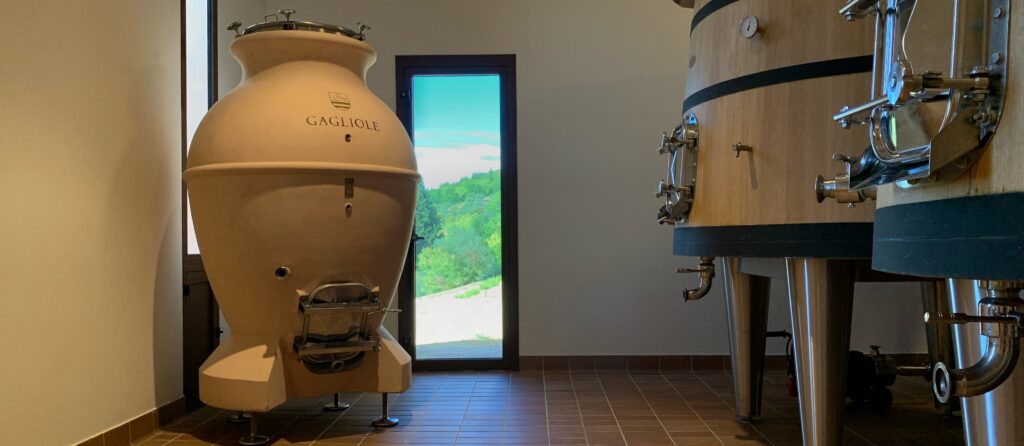2021 a demanding year
The month of January was defined by very cold days and heavy rains. In February and March temperatures were above average for this time of year, accelerating the plant growth and the budding, which occurred at the end of March.
Around the second half of April, an unexpected frost damaged the young shoots in some of our vineyards in Panzano. However, once the heat stress period was over, the plants recovered quickly, giving life to new shoots from secondary buds, and thanks to this there was no decrease in production.
The vintage was then marked by other sudden weather events, including a hailstorm at the beginning of June which fortunately only affected the foliage of some of the vines, and then an August with no rain and temperatures reaching 40 °C, which fortunately did not damage many grapes.
In general, 2021 was a delicate vintage characterised by substantial climatic stress.
Thanks to our experience of the last few years, in which situations similar to that of 2021 have often arisen, we were able to keep the plant system intact without topping and supporting the leaf system using natural products based on microorganisms and plant extracts – agronomic practices that allow the plants to increase their natural defences against climatic stress.
At the end of August, the much-needed rains finally arrived to rehydrate the soil and the plant roots and promote the continuation of the grape ripening.
The first days of September saw a good temperature range between day and night, which greatly increased the development of the Polyfenols. Now we just have to wait for the next rains for the clusters to complete maturation and then we will be ready to harvest! As often happens, the last few days of September will be of vital importance in defining the value and quality of the 2021 vintage!
In the vineyards – since the last week of August we have been thinning, which was not aimed at decreasing production as often happens, but to remove all those clusters from the plants that would not have been able to ripen perfectly, or that were damaged by the heat. We did not carry out any defoliation, so the clusters are currently covered with leaves, which protect the grapes from the sun. The vineyards are now ready for harvest!
In the cellar – in the last few days we have set up the large gazebo in front of the main entrance to our new cellar in Panzano, where every year we locate the destemming machine and the sorting table for the grape selection. At the same time, we have washed and sanitised the steel tanks used for alcoholic fermentation. Finally, the 2020 vintage wines that were still in the “Taransaud” (truncated conical-shaped vats) were decanted into cement vats to make room for the new vintage grapes.
This year we will be selecting special white grapes for a new and exclusive project that will take place in our new beautiful cocciopesto amphora!
Cocciopesto is a material obtained from a mixture of fragments of stone, clay, sand and cement binder. The resulting compound is extremely compact and waterproof. One of the peculiarities of cocciopesto is that it guarantees a controlled micro-oxygenation that steel and other materials do not have. The ability to penetrate oxygen particles makes cocciopesto, like cement, a material halfway between steel and wood, the difference being that this ancient material is neutral, meaning by not releasing aromas it delivers an extraordinary expression of variety and terroir.
The Romans also used this material hundreds of years ago for their wine storage, because they already knew that the egg shape is extremely effective, because due to its natural convection it promotes the recirculation of the vinification must.



